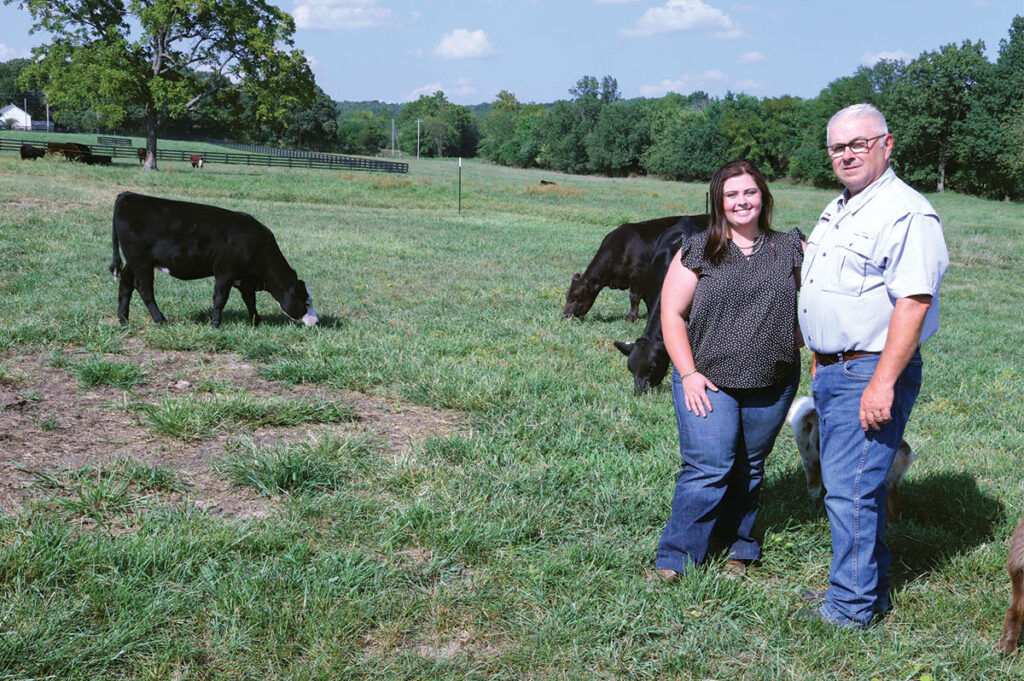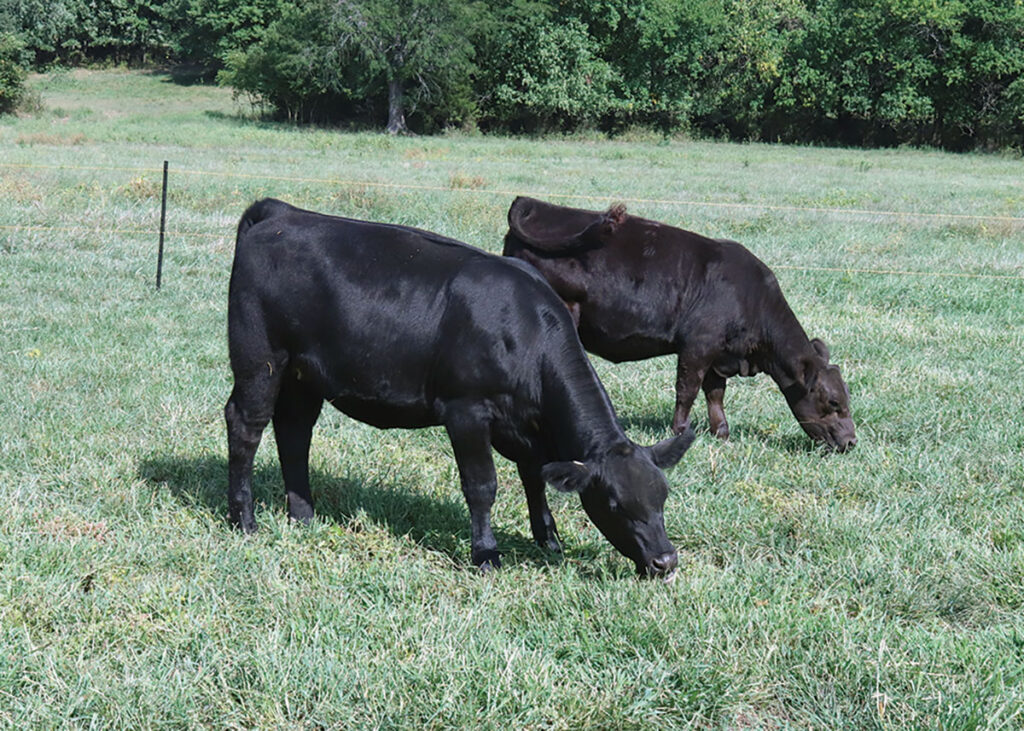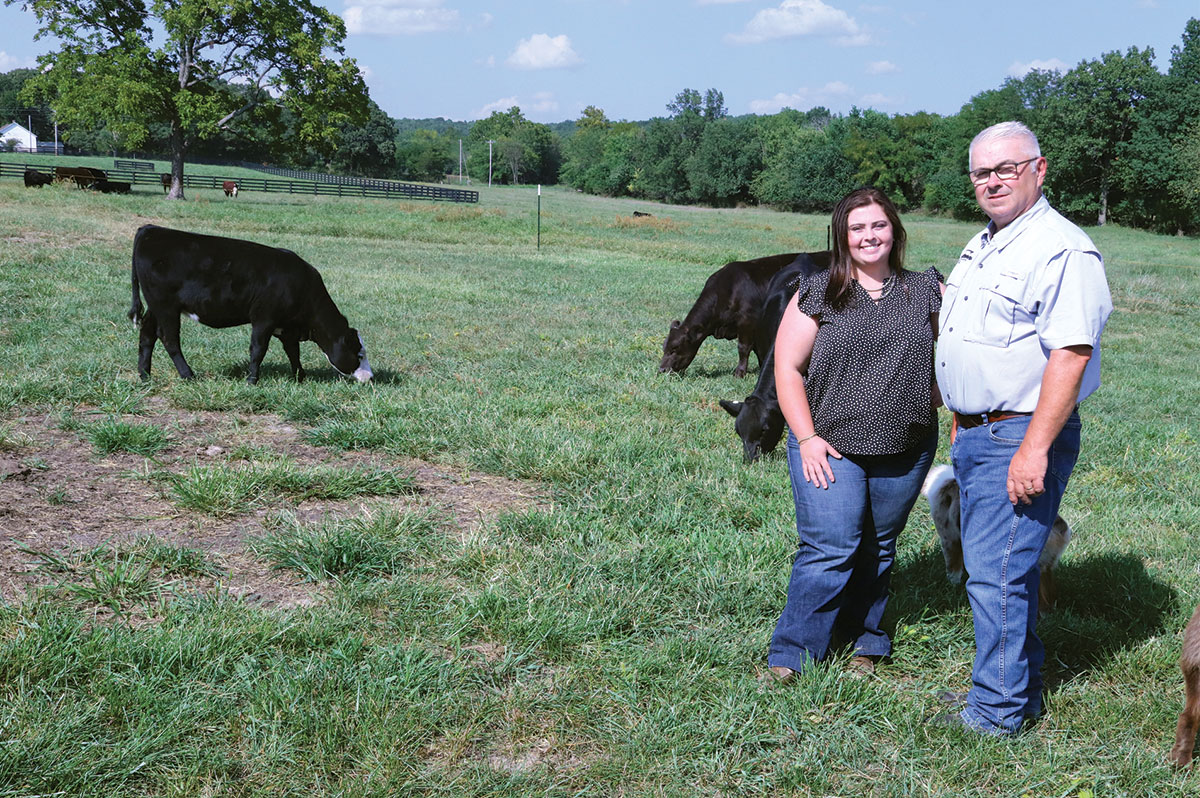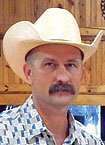
After and eight-year hiatus, the Ericksons returned to the Simmental breed
BUFFALO, MO. – Tim Erickson and his wife Nancy were burning the candle at both ends. They were building their financial business, raising a family and operating a Simmental operation in rural Dallas County, Mo. While they enjoyed all aspects of their busy lives, something had to give.
In 2002, the Ericksons sold their herd of about 200 head. Most of those animals became the foundation genetics of other herds around the Ozarks and the country.
“We didn’t have a cow for about 8 years,” Tim said. “I was still in the cattle business because I had some embryos and semen, but we had no cattle anywhere. I had cattle since 1975, but I was by myself. I didn’t own any land; I didn’t have any tractors. It was more than I could do. Nancy was very, very supportive but couldn’t help with the day-to-day.”
While they took a hiatus from the industry, the family always remembered their cattle roots and the Simmental breed. As daughter Grace and son Parker got older, the Ericksons developed a small, quality herd for the children to show. That spark led to the development of Erickson Stock Farm in Bolivar, Mo., which concentrates on producing top-quality Simmental seedstock and show-quality heifers and bulls.
“We started to creep back in as we discovered Grace liked it,” Tim said. “It was one-by-one for her to show.”
When she started showing, Grace said she built friendships with others who were very “like-minded,” and her love for the daily interactions with the cattle helped her decide developing quality cattle is something she wanted to pursue.
While searching for the foundation of their new herd, the Ericksons did run across some genetics of their previous herd, but they did not purposely seek them, nor did they use any of their retained semen or embryos. Tim said the industry and the cattle changed, so they sought our other genetic lines to be competitive.
“It was way less important than a quality animal,” Tim said. “If Grace is standing last in a class, it’s less important if that heifer is the granddaughter of one of dad’s cows.”
Grace is active in the operation and works side-by-side with Tim. The Ericksons currently have about 30 fall and 30 spring calving females in their breeding program, in addition to a select group of females used as donors, with about a dozen embryo calves each season.
“I got into helping make breeding decisions,” she shared. “We showed a lot, but we’ve gotten more cattle since I’ve been out of junior (shows). We’ve been able to sell cattle to juniors and help them at shows, and I enjoy that; it’s been fun for me. We still go to shows, but it’s more about taking sale heifers and going to help customers.”
Tim said Grace “aged herself out” of showing and became a breeder at 17 or 18.
As they rebuilt the herd, the Ericksons combed the country to find the genetics they aspired to: an animal with excellent eye appeal and well-balanced EPDs.
“It’s all about quality,” Tim said. “We don’t want to run 200 cows anymore.”
“Calving ease is bred into everything we have,” Grace said. “Now, we look at things like good mothering ability, being a good milk producer, and having more overall balanced EPDs. We don’t have to have everything in the top 1 percent of the breed, but if it’s balanced across the board, it’s something we want. We’ve purchased a lot of animals, and we’re now using our own, utilizing those previous purchases but honing in on what we like. We’re enjoying that part because it’s what we’ve raised.”
That balanced approach, Grace added, gives more options to breeders.
“We’re seeing a trend of more growth,” she said. “People want bulls to put on Angus or commercial cows and still add more power.”
Through their selective breeding program, Tim hopes fellow producers will be able to quickly identify Erickson-bred cattle.
“I want those big-middle, thrifty, productive, easy-doing females that naturally bring their neck up,” Tim said, adding they are working to develop their signature style of cattle.
“Most of the cattle we’ve developed are extremely similar,” Grace said. “It’s what we like and what we like to look at, but it’s very functional for here too. We want them to carry and raise bulls because we’re reaching those commercial breeders with our bull sales. We want a cow that can produce a powerful bull so our customers can sell their calves at the sale barn. Calving ease has been a stigma for the Simmental breed, but we’ve, mostly as a breed, resolved most of those problems, as long as you’re paying attention.”
The Ericksons have sold about 30 bulls since returning to the cattle business.

“I sold 1,000 Simmental bulls easily before, but it’s hard work these days,” Tim said.
The focus is breeding and developing quality bulls over producing more bulls.
“It’s easier for us to make decisions on bulls and what to keep,” Grace said. “We have options for our steers by feeding them out and marketing them as beef. We have an easy avenue to be choosy.”
For those heifer buyers, Tim and Grace feel the power and style of females produced at Erickson Stock Farm are very appealing to those wanting to introduce the same traits in their herd.
“The bred heifers we sell, we put them out as herd starter packs,” Grace said. “All of our bred heifers should be able to go out and raise a herd sire to carry on with their operation. That’s the things we talk about when it comes to real-world mothering ability and surviving on Missouri fescue; it’s bred into them so people don’t have problems down the road. We want cattle that are well adapted.”
Part of that herd development is not overfeeding and seeking genetics that do well with fewer inputs.
“We don’t have time to baby anything, and we don’t need to baby anything because that’s not a trait we want to carry on,” Grace said. “We are very choosy about that, which is helpful for us and people down the road. That’s why you get repeat customers; they come back and buy a good animal every year. That’s what we get excited about.”
Grace added after-the-sale care, especially for those who buy show cattle, is another signature trait of their operation.
“It’s more than helping the kids at the shows,” she said. “It’s helping them develop a feeding program for their heifers, helping with breeding decisions, and figuring out what they want to do down the road. We have a family who has raised tons of cattle but not necessarily show cattle.”
“That’s not something that happened 25, 50 years ago,” Tim added. “Now, standing by that animal, you’re busy five Saturdays in a row, helping get ready.”
Simmental breed is now what Tim said he was working toward decades ago.
“I was heavily involved in the transition from the spots to the black,” he said. “We were working to bring down the size and were running the young sire carcass testing program. What we’re raising now is a lot like them, but the breed got smaller and smaller, but now we’re getting that power back up; not to the 1990s standard, but the 2000s.”
Tim and Grace have taken the lead in the family’s cattle operation, but Tim said his daughter often “challenges him.”
“She challenges me to not be very science and numbers-oriented,” he explained. “Grace has grown up in a different thinking, and it leads us to having good cattle.”
Grace said they make a good team, but there can be some differences of opinion regarding mating selections.
“It depends on which animal it is,” Grace said with a laugh. “When we flush, we can usually agree because we’re flushing to more than one sire and have enough cows to utilize many different bulls. Our main donor cow, we have gotten so much consistency on her calves that she’s a good base point to say, ‘OK, which bulls do we want to try?’ She’s going to be consistent; most of our cows are very consistent.”
“We’re flexible, but we both come to the table with strong ideas,” Tim said. “The last few years, there’s been more total agreement. For me, the goal is to affect the breed on the bull side. When we dispersed before, we had six or seven bulls in stud, and two of those affected the bull side in Canada, with modest success here. Ultimately, we want to positively affect the population of the Simmental breed with our bulls, which means one or two of these balanced bulls making it into stud books to provide revenue for us and be used enough to matter. I love Simmental cattle, and I want our cattle to be an imprint 15 years from now; that’s always been my goal.”
Grace added she hopes to make an impact while continuing to breed cattle they like.
“It’s what we want to breed and how we want to make them and sharing that with other people,” she said. “I think in the Simmental breed, there are a lot of people going different directions, and I don’t think Dad and I are very trendy. I don’t know if we buck the trend, but we know what we like and how to get to that angle. I hope we continue with that.”







